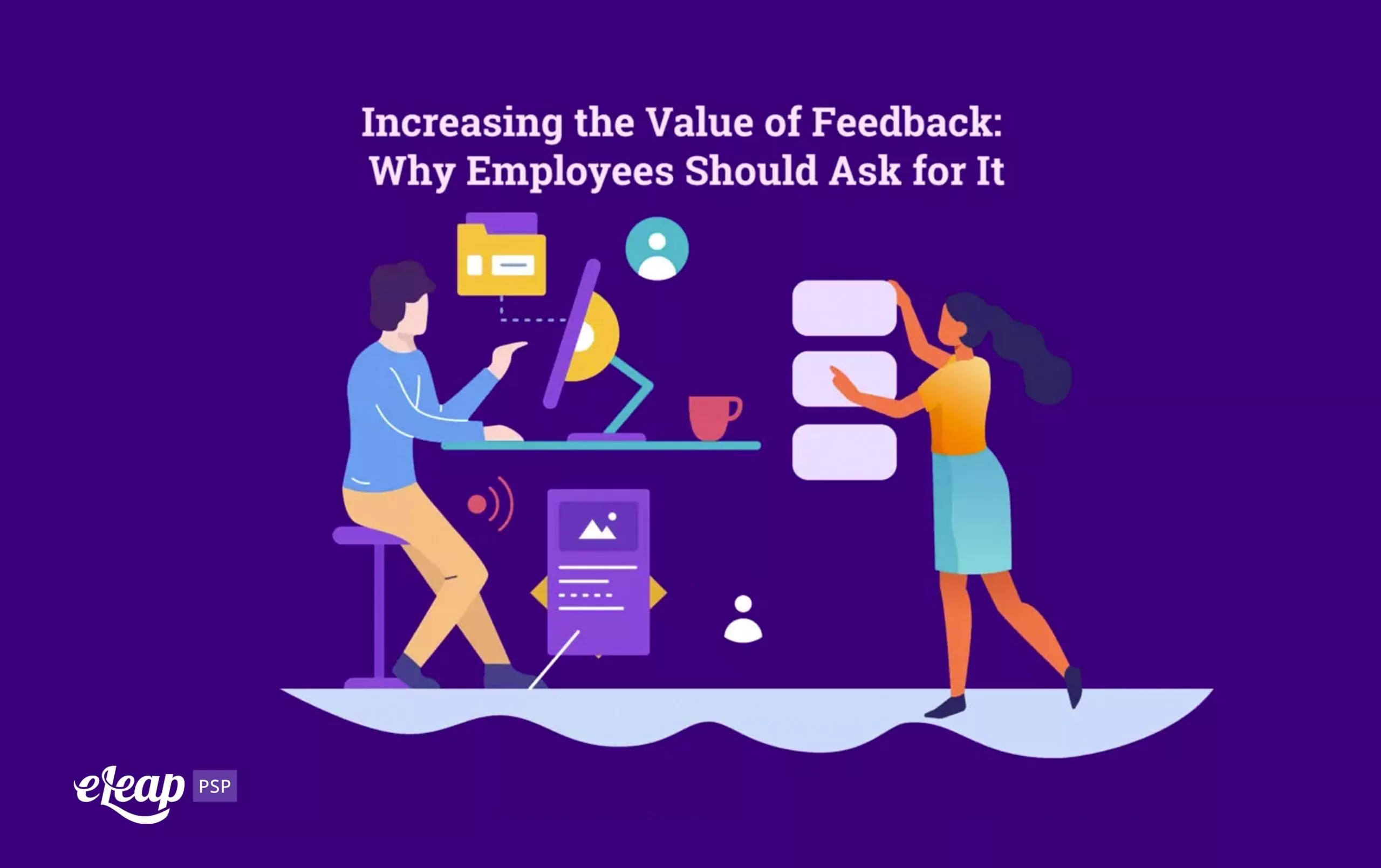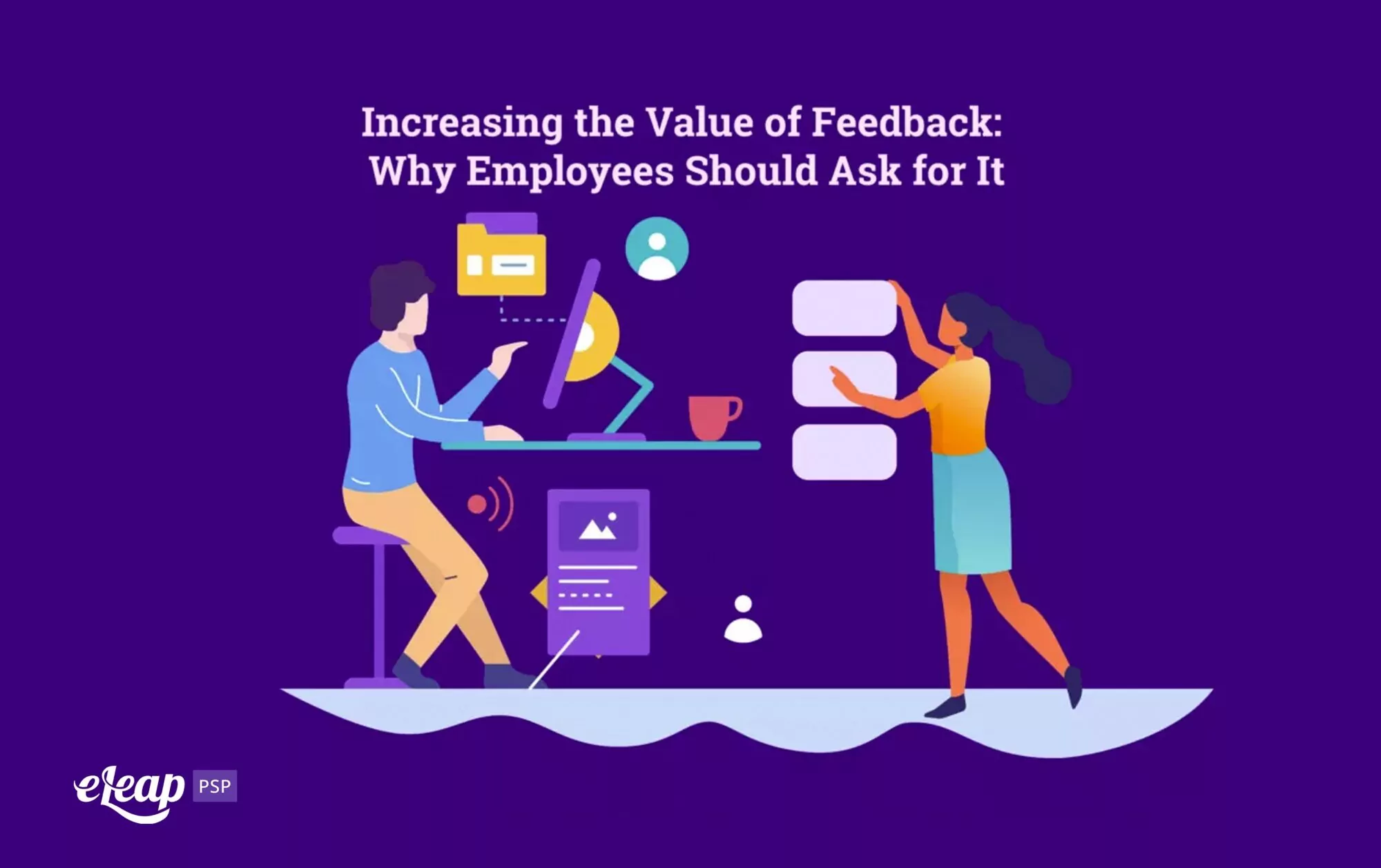Increasing the Value of Feedback: Why Employees Should Ask for It

Chances are good that your managers strive to provide at least some feedback to the employees they manage. It might come in the form of annual performance reviews, or maybe you’ve caught up with the evolution of performance management and are using regular check-ins and smaller conversations to help guide employees. Feedback offers a strong way to guide performance and help improve learning across teams, but if it’s not provided with the right frequency or correctly, it loses a lot of its value.
In a perfect world, your managers would provide feedback to each employee they manage every week. For most organizations, that’s not the reality. You might be doing it quarterly or maybe even monthly, but that’s just too infrequent and can lead to some serious problems.

The Issues with Inconsistent, Infrequent Feedback
In most cases, feedback from a manager to an employee is going to be unsolicited. That might be the norm, but it’s not a positive thing. Think about it – when someone feels compelled to give you unsolicited advice, do you generally take it well? You might think that you accept any feedback with grace, but there’s a good chance that underneath it all, you’re not all that happy about it.
In fact, one study found that when presented with unsolicited feedback, employees went immediately into a “fight or flight” response. Their heart rates jumped up, becoming faster and erratic. Adrenaline flooded their systems, and their stress levels skyrocketed. The brain sees these events as threats and prepares the body for survival.
It comes down to this: unsolicited, manager-led feedback is seen as an attack. Less than 30% of employees feel that standard feedback provided at work helps them improve, and in at least one-third of instances, the feedback can make the situation worse.
Obviously, any advice given when someone’s in this state is only going to be partially absorbed, and, likely, the individual’s not going to put a lot of value on what is said. It doesn’t have to be that way, though. There are ways to increase the value of feedback, reduce employees’ stress response, and build a stronger, more cohesive workplace.
What you need to do is empower your employees to self-assess and identify areas where they need guidance, advice, or improvement on their own. They can then ask for feedback from managers, peers, and others within the organization. This immediately eliminates the threat response because they themselves solicited the feedback in the first place.
How to Empower Your Employees
Empowering your employees to seek out feedback for themselves is critical. How do you achieve that, though? It’s not as simple as telling everyone, “Ask if you need help,” is it?
They Want Guidance
Deep down, most of us want feedback and guidance. We want to do a good job. We want to perform well. We want to excel. Most of us just don’t know how to ask for it. In some cases, there may even be a culture that prevents people from asking for help because it might be seen as a sign of weakness.
Investigate the Culture
Because a lot of anti-development problems stem from company culture, take a deep dive into yours. Ask some hard questions, like the following:
- Does asking for feedback here equate to showing weakness?
- Are my employees’ careers tied to being strong and competent?
- Would “weakness” be a sign that someone’s job is in jeopardy?
- Does the culture celebrate learning and growth?
- Is it acceptable for someone NOT to know something?
Once you’ve taken stock of your culture, you’ll be better positioned to move forward. Overall, an open culture, where it’s okay to ask questions, and where learning and development are celebrated, will better empower employees to seek out feedback on their own.
Give Them the Tools Necessary
Finally, you need to make sure that your employees (and managers) have access to the tools they need to request feedback. Ideally, they should be able to do this through your performance/learning management system so that the process is largely automated. In-person, face-to-face sessions are also valuable, though.
- Give them the ability to request a particular type of feedback – constructive, positive, or both, for instance.
- Give them the ability to request feedback from specific people. This ensures that employees can ask for guidance from those they trust most.
- Give them the ability to create a feedback network, where everyone gives and receives feedback from different perspectives.
- Make sure that feedback is always based on a constructive point of view and never comes from a destructive place. Constructive feedback builds people up, helping them grow and develop, while destructive feedback tears them down.
- Focus on providing direct feedback, not sandwiching constructive feedback between positive elements.
- Create a sense of psychological safety in the workplace. When employees feel safe from threats, they’re more likely to ask for (and then implement) feedback on their own. However, if you have a negative corporate culture and employees live in fear of the repercussions that stem from being imperfect, they’ll rarely seek out guidance because that would undermine their position and possibly put their jobs in danger.
Change the Feedback Paradigm
Every company can benefit from empowering employees to seek out feedback on their own. Not only does that help ensure that your teams can learn, grow, and develop, but it lightens the load on management, too. No one really likes the old way of providing feedback, and when a manager can provide guidance after being asked for it, it changes the entire situation, helping to create a positive, vibrant corporate culture that supports success at all levels.
Ultimately, empowering your employees may require that you do more than just implement a new mandate, though. Too many companies still operate under the old rule – that learning and growth are bad things. To make real change, you may need to evolve your culture.